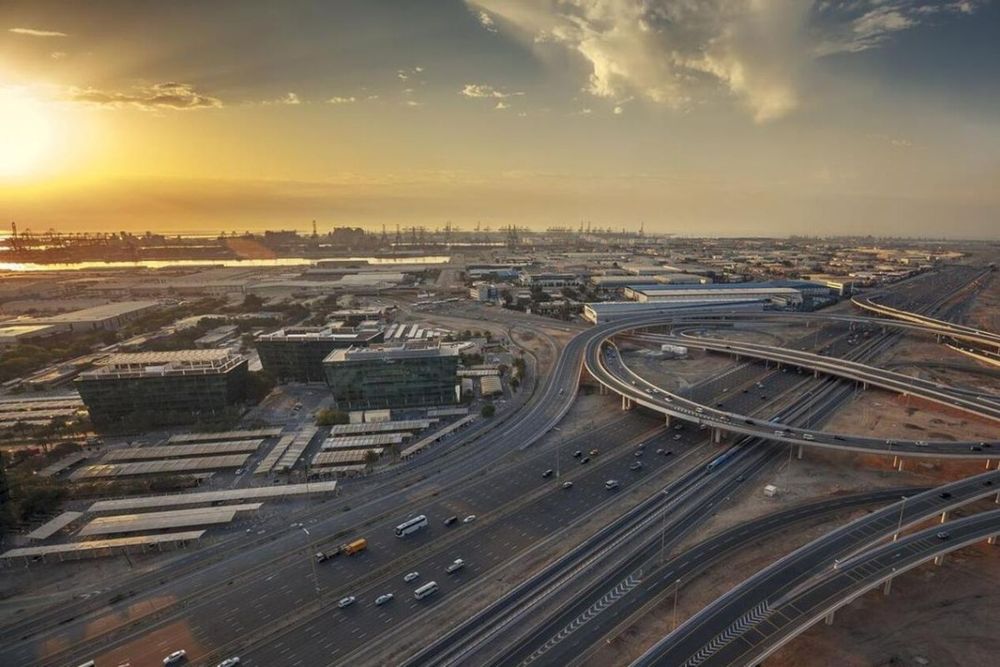The e-commerce sector will continue to lead the demand for warehouse space in Dubai.
Industrial and logistical space in Dubai recorded the strongest demand on record in the first half of 2023, mainly driven by companies relocating their operations to Dubai from other locations, a leading real estate services provider said.
The near-shoring trend that many companies have adopted was also a reason for this demand surge, according to Savills.
“There was also a spike in demand for logistics and industrial space due to the surge in local manufacturing, which is due to the UAE’s industrial strategy dubbed Operation 300bn, which aims to boost the country’s industrial sector, establish the UAE as a global exports and re-exports hub, and create new job opportunities,”
said the report.
According to market reports, industrial rents in Dubai have risen sharply over 2022 as demand continued to outstrip supply. On average, warehouse lease rates continued to escalate across Dubai, specifically, Grade A rents in Al Quoz which increased by 57 percent during 2022. All industrial submarkets in Dubai experienced strong rent rises in 2022, reports said.
Michael Fenton, director, of Industrial & Logistics, Savills, said oil and gas-related companies, e-commerce operators, contract logistics, and indoor farm operators were the prominent demand drivers for warehouse leasing activity in H1 2023 in Dubai.
Fenton said the e-commerce sector was another significant driver of demand during H1 of 2023. Hub-and-spoke delivery channels are gaining more popularity among e-commerce enterprises.
“It is a highly popular concept in developing markets, and we are beginning to witness this trend in Dubai as well. The model calls for the construction of a large “mother” warehouse close to key infrastructure, such as a port, followed by a smaller delivery facility or “last-mile” storage location. The increased use of smaller-sized units closer to the city is partly due to the quick delivery platforms’ rising popularity.”
The e-commerce sector will continue to lead the demand for warehouse space in Dubai, with every 1.0 percent rise in the population requiring an additional 0.5 percent of warehouse space.
Savills noted that another key factor in driving the demand was the third-party logistic companies.
“For example, J&T Express, an Indonesian delivery giant, significantly ramped up its operations across Dubai and currently leases circa 161,000 sq. ft. of space across Dubai Industrial City, Dubai Airport Freezone, and Dubai South, with plans to further increase its warehousing space to 430,000 sq. ft. by 2026.”
The report said oil & gas companies were also among the top occupiers of warehousing and industrial space across the country. By 2027, the UAE is expected to spend close to $150 billion to boost its oil production capacity.
The UAE-India Comprehensive Economic Partnership Agreement (Cepa), as well as the UAE’s plans to extend it to Israel, Indonesia, Turkey, and Colombia, are all contributing to a buoyant occupier market.
“Thanks to the emirate’s strategic location, the China Plus One strategy, and the close economic ties between China and the UAE, Dubai has benefitted from Chinese companies setting up shop in the city by leasing space to manufacture and export to nearby GCC and African countries,”
Savills report said.
Swapnil Pillai, associate director of Middle East Research at Savills, said leasing activity was concentrated across prominent non-bonded warehousing hubs such as Al Quoz, DIP, and NIP.
“Vertical farm operators, companies from the retail and leisure sectors, as well as e-commerce and FMCG players, were the notable occupiers of space,”
he added.
The report noted that there had also been a significant increase in warehousing capacity and demand across the Jebel Ali Free Zone Authority (Jafza). The sub-market has benefited from the close economic ties between India and China. The Freezone has reported a 30 percent y-o-y increase in new customer registration. The number of Chinese companies operating out of the free zone has increased by four times in 2022, while the number of Indian companies has grown by 30 percent y-o-y.
News Source: Khaleej Times









